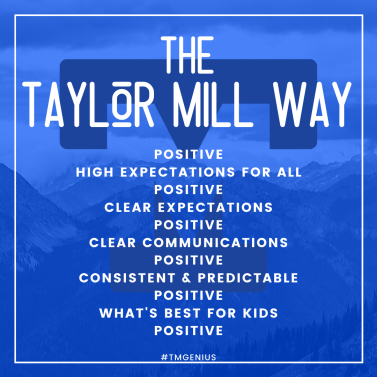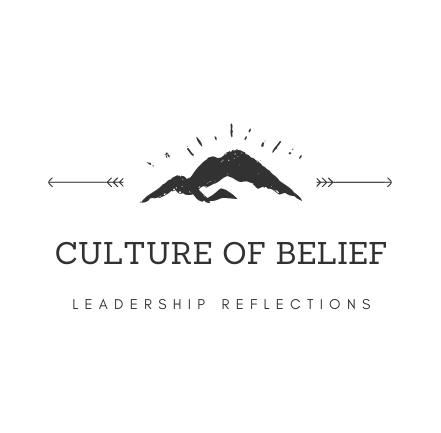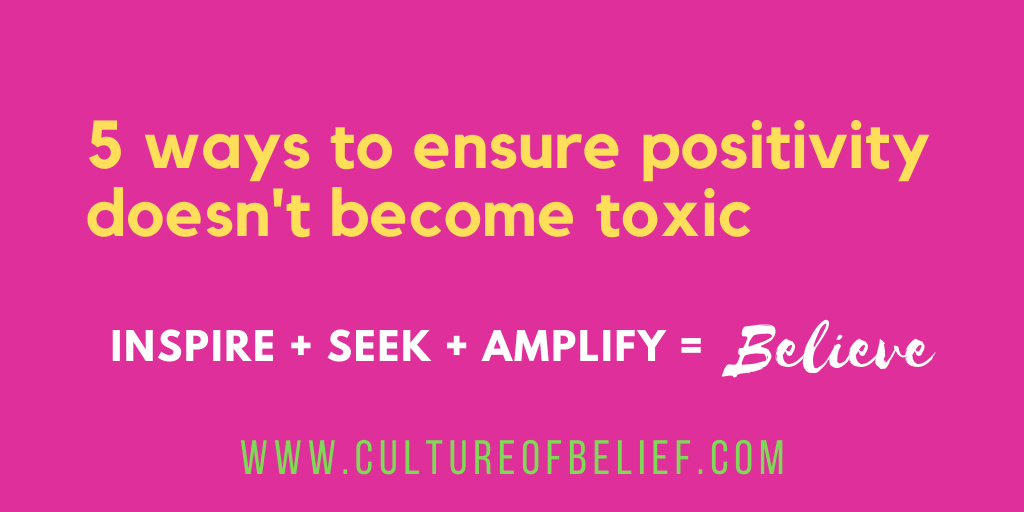INSPIRE
A staff member entered my office, sat down at the table with me and sighed deeply. She began, “This conversation is going to be uncomfortable.” She looked up from her notecard at me with a nervous but hopeful glance and then continued, “And that’s ok. I know we’ll get through it and I know we’ll be better because of it. Oh, and I’m nervous.”
This valuable conversation, clearly built on a strong, trusting relationship, is exactly what I’d hope of when I became principal almost four years ago. From the start, I’d made it clear that I envisioned a culture built on positivity. Even before our shared vision, mission, core values and school goals were even initiated, I had communicated a list of behaviors that I would hold dear as a leader. As we’ve moved forward together on our shared ideals over the years, we haven’t needed to refer to this as often, but “The Taylor Mill Way” (below) kicked our team off in an important way.

It doesn’t take more than a glance at this list to understand that I value positivity. I want to model positive leadership and inspire positivity in others. It is safe to say that I am very much a glass-half-full kind of person. But make no mistake, the kind of positivity I esteem is not the kind of “Pollyanna Positive” that speaks unicorns and rainbows no matter the situation or reality because this kind of positivity, what I’ve come to understand as toxic, does real harm. The kind of positivity I cherish seeks to understand the harshness of the many challenges that are sure to come when you are chasing greatness. Instead of throwing hands up and giving in at the first bump in the road, my kind of positivity builds strength and resilience through curiosity and acknowledgement in the difficult. My kind of positivity is built on a ridiculously strong belief in what we, together, can accomplish.
Toxic positivity ignores the negative. True positivity overcomes the negative. And there is a massive difference between the two.
SEEK
Creating and nurturing the kind of positive culture that allows both a head up in the clouds and feet planted firmly on the ground is important. This kind of healthy culture builds connection and a sense of belonging, casts a vision of hope and inspires greatness. Leaders who are committed to building this kind of team agree to practice these skills and encourage them in those they serve.
- Find the Word on the Street – Great leaders don’t just listen to feedback, they actively seek it out. I shared this with our team during my first year as principal, asking “What’s the word on the street?” It began with a teacher letting me know that people were upset because their pencil sharpeners were broken. I had no idea and we quickly ordered new ones. It has evolved and become an open invitation for staff members to share information they feel is important for me to know. As you may imagine, most of the time the “word on the street” is a harsh reality that, after becoming aware, we can address and begin to solve together.
- Mine for the Undercurrent – Jimmy Casas talks about how, as a leader, you must seek out the undercurrent in your school culture because that undercurrent IS your culture. By actively beginning and leaning into difficult conversations, I’ve realized how much I learn by listening. I gain an invaluable amount in terms of not just information but also in building meaningful relationships. I ask questions like:
- Are there problems out there we should be solving?
- What questions should I be asking that I’m not?
- Do you feel “in the loop?”
- Get Comfortable Being Uncomfortable – I’ve made this one of my mantras and actively model the messiness of progress. I work to be a leader who is confident in the unique gifts I bring to our school AND seek to continually learn and grow, a behavior that is a direct result of “The Genius of AND,” one of our Sticky Core Values. Progress on our path to greatness only occurs outside of our comfort zone and we have to be okay with the uneasiness and tension that comes along with this. No room for “Pollyanna Positive” here. We have be transparent about all that our important work requires.
- “Care”front – While a toxic culture touts things like vision, mission and core values while doing something else, a healthy, positive organization has the courage to actually live them. This requires building the skills necessary to transform behaviors that go against these pillars, requiring what we like to call “care”fronting. (See How to Carefront Like a Genius) Great teams are made up of people who love and believe in each other enough to have necessary but difficult conversations.
- Embracing the Opportunity That a Challenge Brings – Some things become so cliche that we don’t stop and pause long enough to truly internalize the meaning. Changing your perspective to look at challenges as opportunities is certainly one of these cases, as it easily rolls off the tongue. In the midst of difficulty, however, it is hard to see what can be gained. Take a step back and ask, “What learning can I take away, even if I fail?” This is a powerful way to remain positive with your feet still firmly planted on the ground.
AMPLIFY
Positivity that refuses to give into the forces of mediocrity is hard, hard work. So difficult, it requires daily discipline and an uncommon level of commitment. It also takes others who have agreed to be on the journey along with you. It is also worth it and what is needed if we are going to be the kind of culture our students and staff need.
How do you ensure that your positivity doesn’t become toxic? Together we are brilliant, so I’d love to connect! Tweet and tag me (@me1odystacy) or feel free to start a conversation by commenting below.


Leave a comment